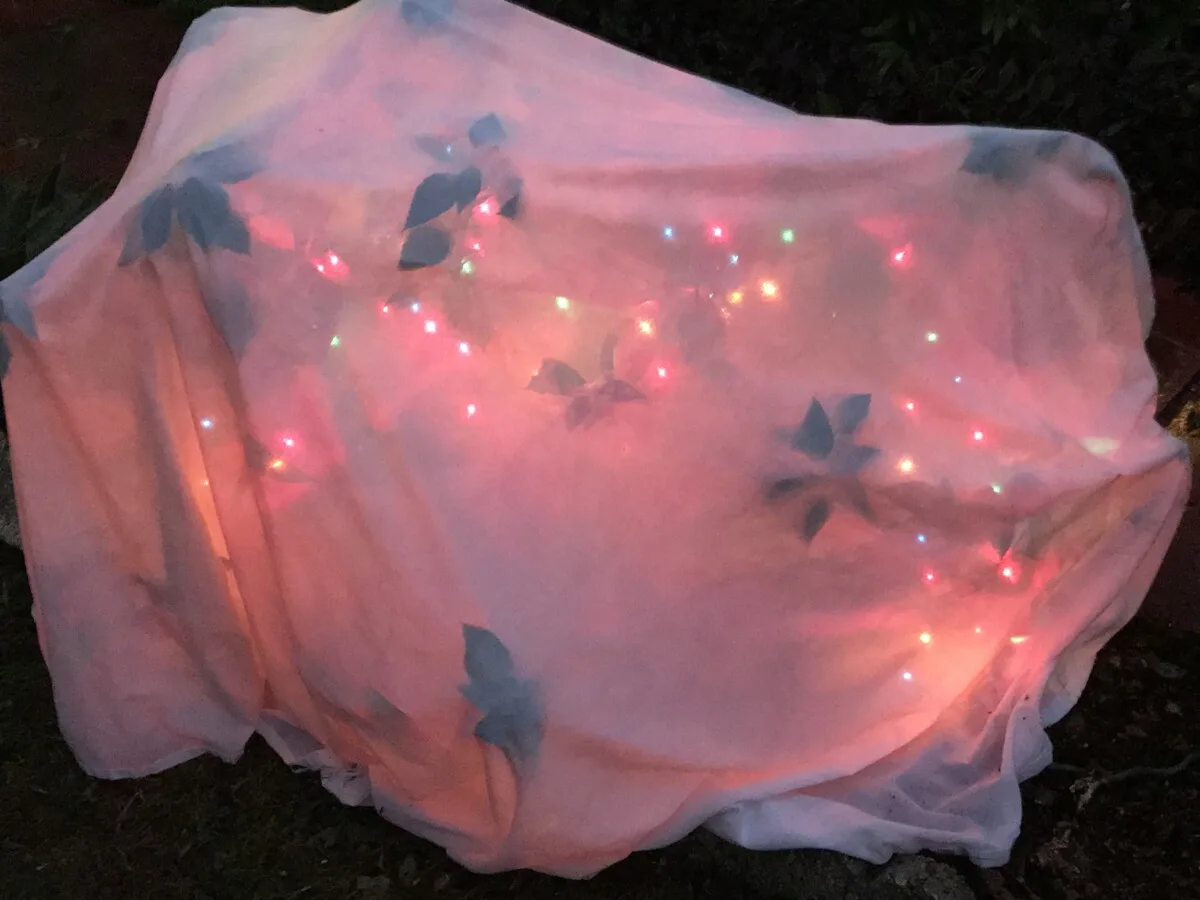
Over the years, I’ve come to appreciate the mild winters we enjoy in the southern United States. However, I’ve also learned the importance of being prepared for those occasional cold snaps that can catch us by surprise.
Even in Central Florida, I have had to protect plants from frost at least once or twice a year. In 2022, for example, we had a record-breaking three nights of freezing temperatures.
Understanding how to effectively protect your plants from frost is crucial.
After all, fall is our prime gardening season in zones 8-11, especially for tender annual vegetables that suffer in the heat of summer. Without protection, a surprise overnight cold snap can wipe out months of work before you’ve gotten a full harvest.
An overnight frost can put a knot in your stomach. We’ve all been there, wondering how our plants will fare over a sudden chill.
Experience over the years has taught me a few techniques for protecting plants during unexpected frosts. I’d like to share these insights I’ve gained, so you can feel confident and ready when the weather takes a turn.
When to Protect Plants from Frost
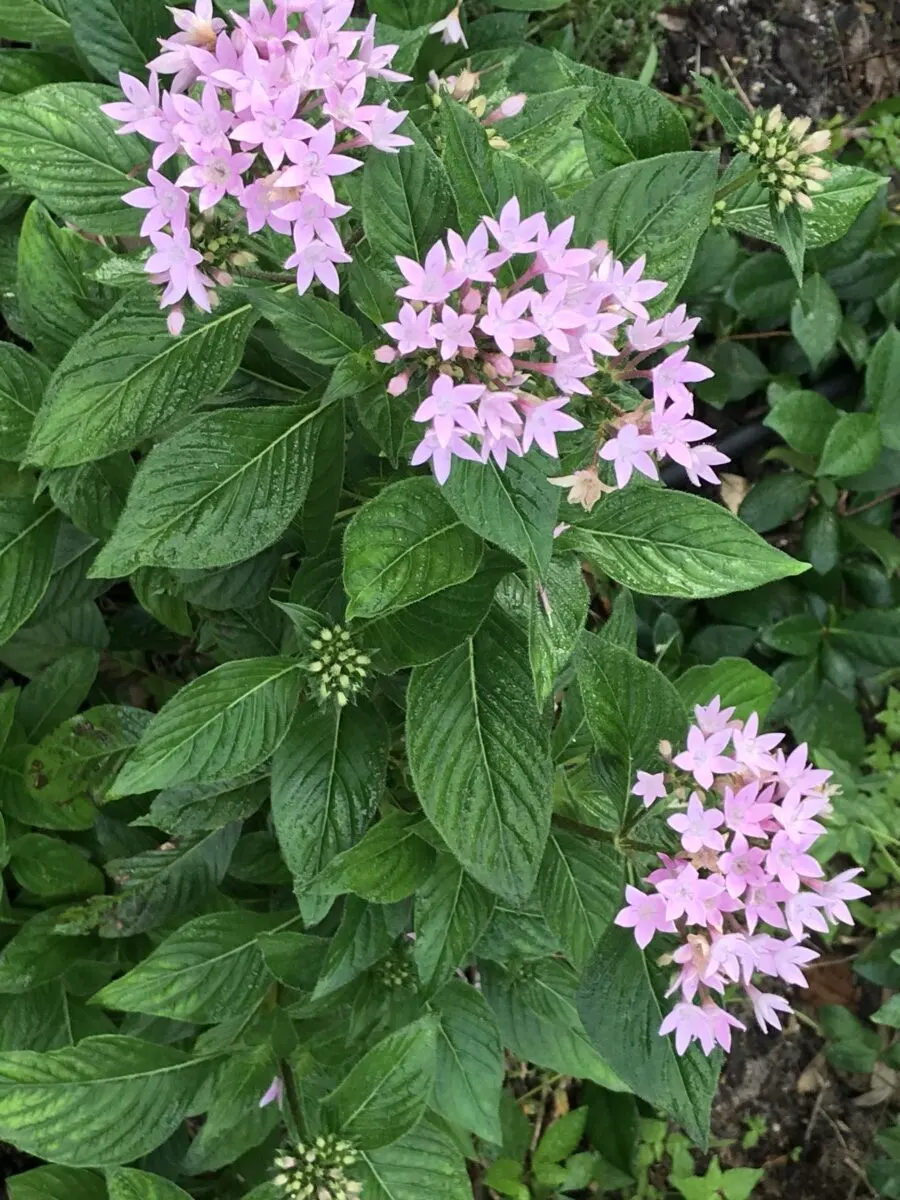
In our warm southern region, frosts are not a usual worry. Depending on your zone and microclimate, you may only have to protect your plants from frost once or twice over the entire winter.
What temperature should I cover my plants for frost?
The exact temperature to start worrying really depends on what types of plants you have. My front yard is full of tender tropical plants, like mandevilla, tropical hibiscus, and sanchezia. Many tropical plants are sensitive to temperatures below 50°F (10°C).
I’ve planted my most cold-sensitive plants nestled in protected areas near the house and under tree canopies, but I do start considering frost protection when the forecast predicts drops below 40°F (4.4°C).
It’s wise to start considering protection for plants when nighttime temperatures are forecasted to drop to around 35°F (2°C) or lower. While frost typically forms at 32°F (0°C), a little buffer helps safeguard more sensitive plants.
At what temperature does frost occur on plants?
Frost occurs on plants when the temperatures dip to 32°F (0°C) or below. However, it’s not just about air temperature. Frost forms on plants when the plant surface itself cools down to freezing.
There is also what is known as “hoar frost,” which is when the humidity around your plants freezes and settles on the leaves. Frost is basically just frozen dew.
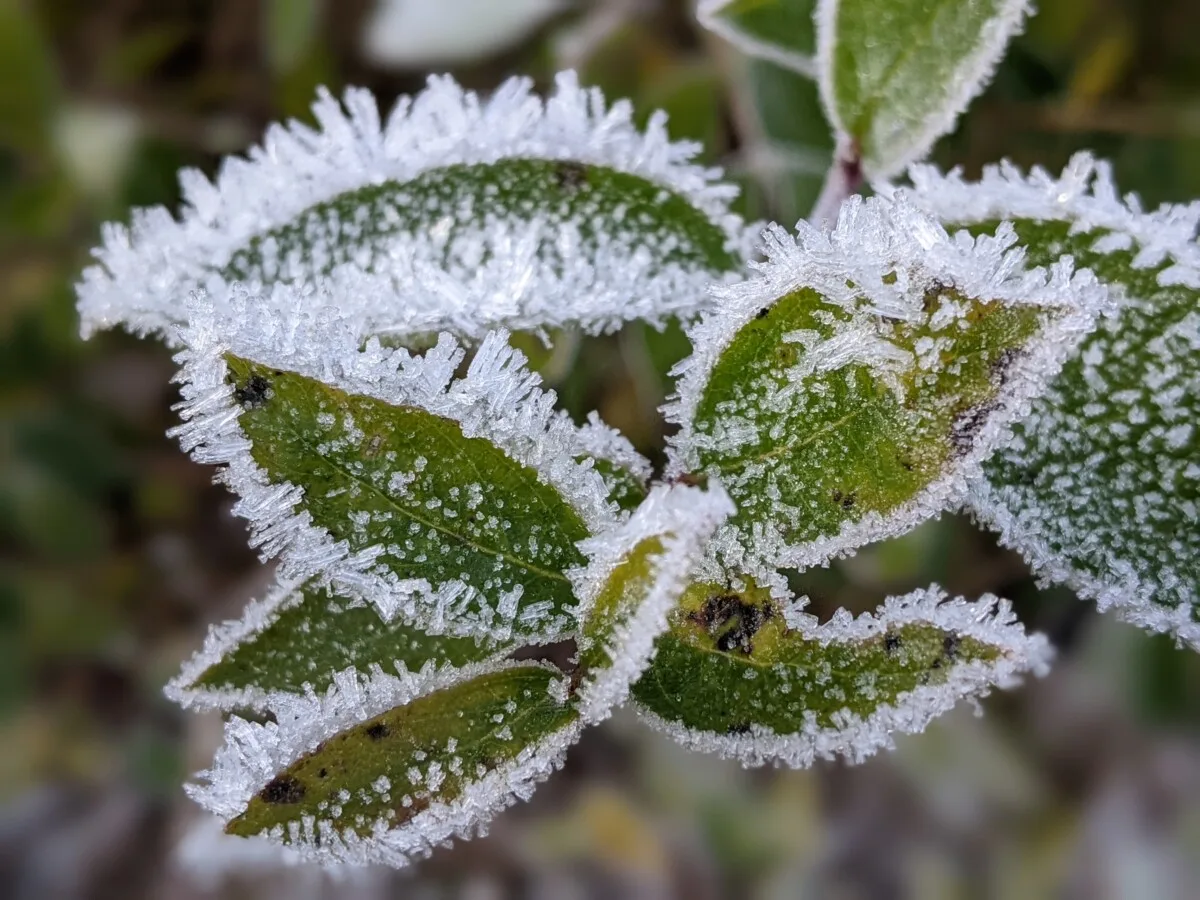
This can happen even if the air a few feet above ground is slightly warmer. Factors like clear skies, calm winds, and long nights are also conducive to frost formation.
Make the most of the microclimates in your garden
Most of my tender tropical plants are in protected areas close to my house or under trees. These areas near buildings, under tree canopies, or in low spots often provide some protection from frost. Pay attention to these microclimates, as they can significantly influence when and how you should protect your plants.
What Plants Need Protecting from Frost?
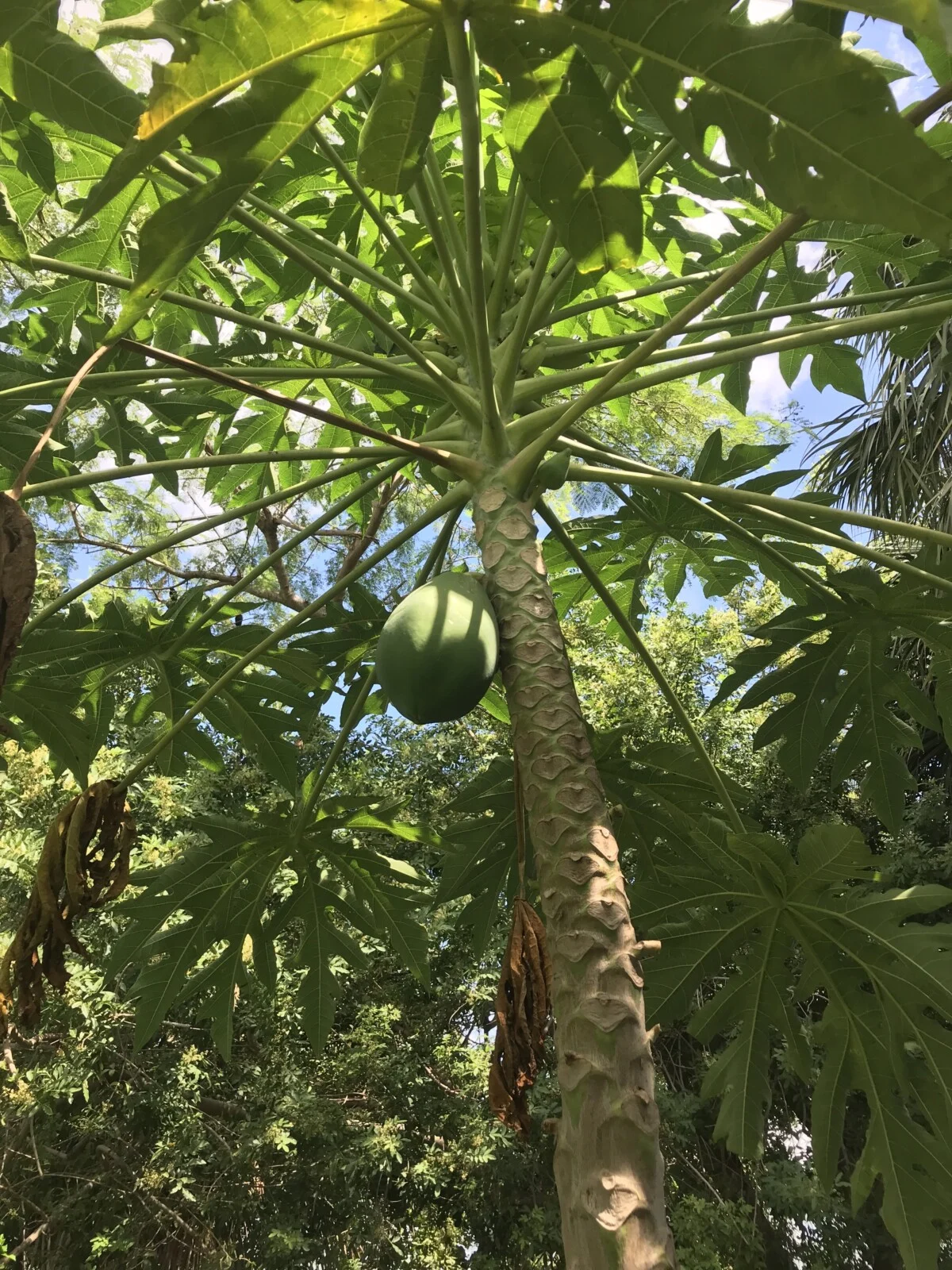
In warmer climates in the Southern U.S., many plants thrive throughout the year without the worry of frost damage. However, when a cold snap looms, it’s important to know which plants are most at risk.
Both ornamentals and edibles have varieties that are sensitive to frost, and understanding which ones need extra care can make all the difference.
Ornamental Plants
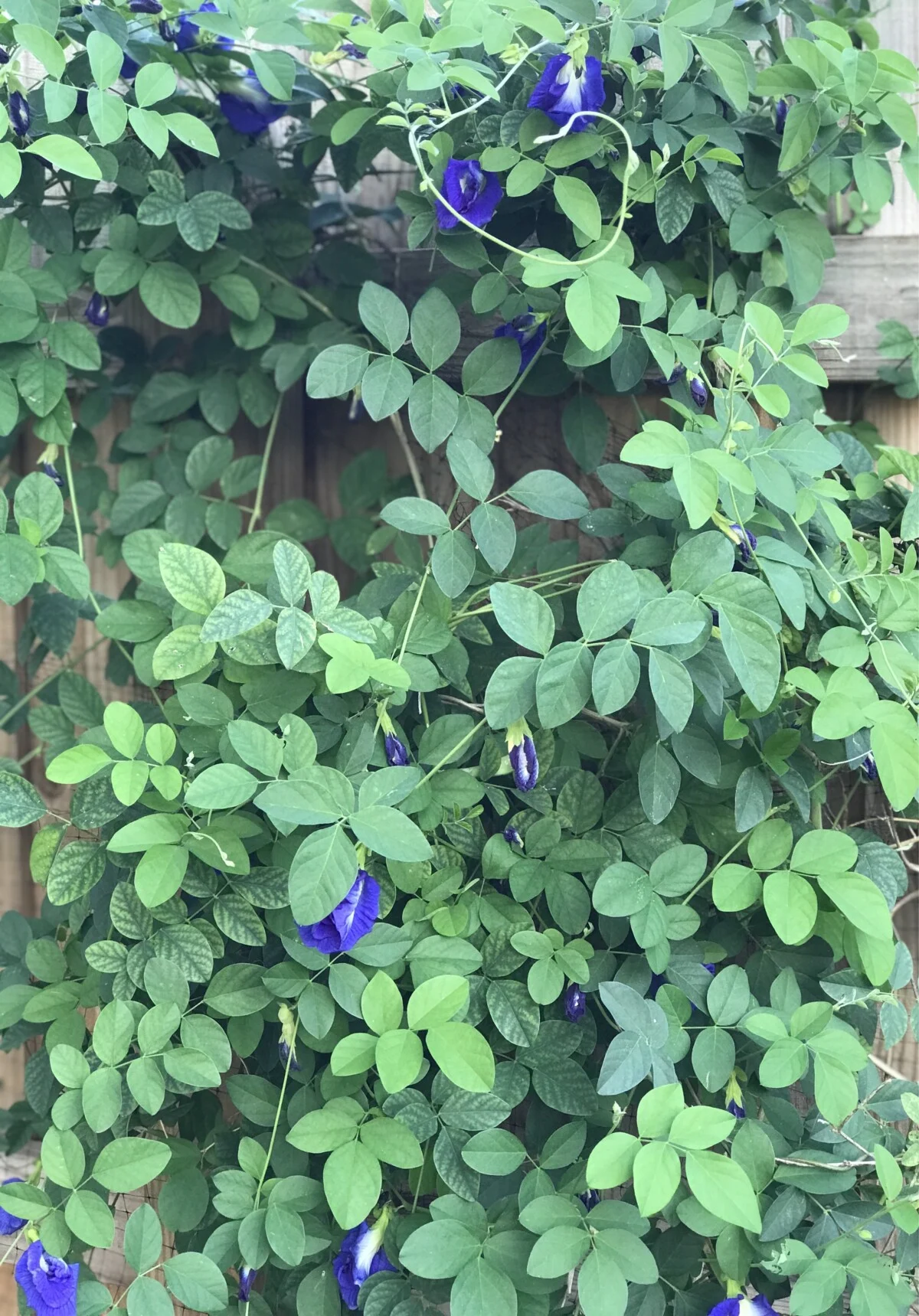
Many ornamental plants in subtropical gardens are sensitive to cold. Species like Tibouchina, tropical hibiscus, and plumeria are particularly vulnerable.
Additionally, plants like bougainvillea, canna lilies, and Bird of Paradise, which flourish in warmer conditions, may suffer when temperatures dip below freezing.
Young plants and those recently transplanted are especially at risk, as their root systems are not fully established.
Shrub Protection
The need for frost protection among shrubs varies. Tender varieties, especially those that are newly planted or not fully established, often require covering.
Hydrangeas, azaleas, and certain types of rhododendrons are examples of shrubs that might need protection.
In contrast, most evergreens, such as junipers, hollies, and some types of boxwoods, are usually more frost-resistant and may not require additional care during a frost.
Edible Plants Requiring Protection from Frost
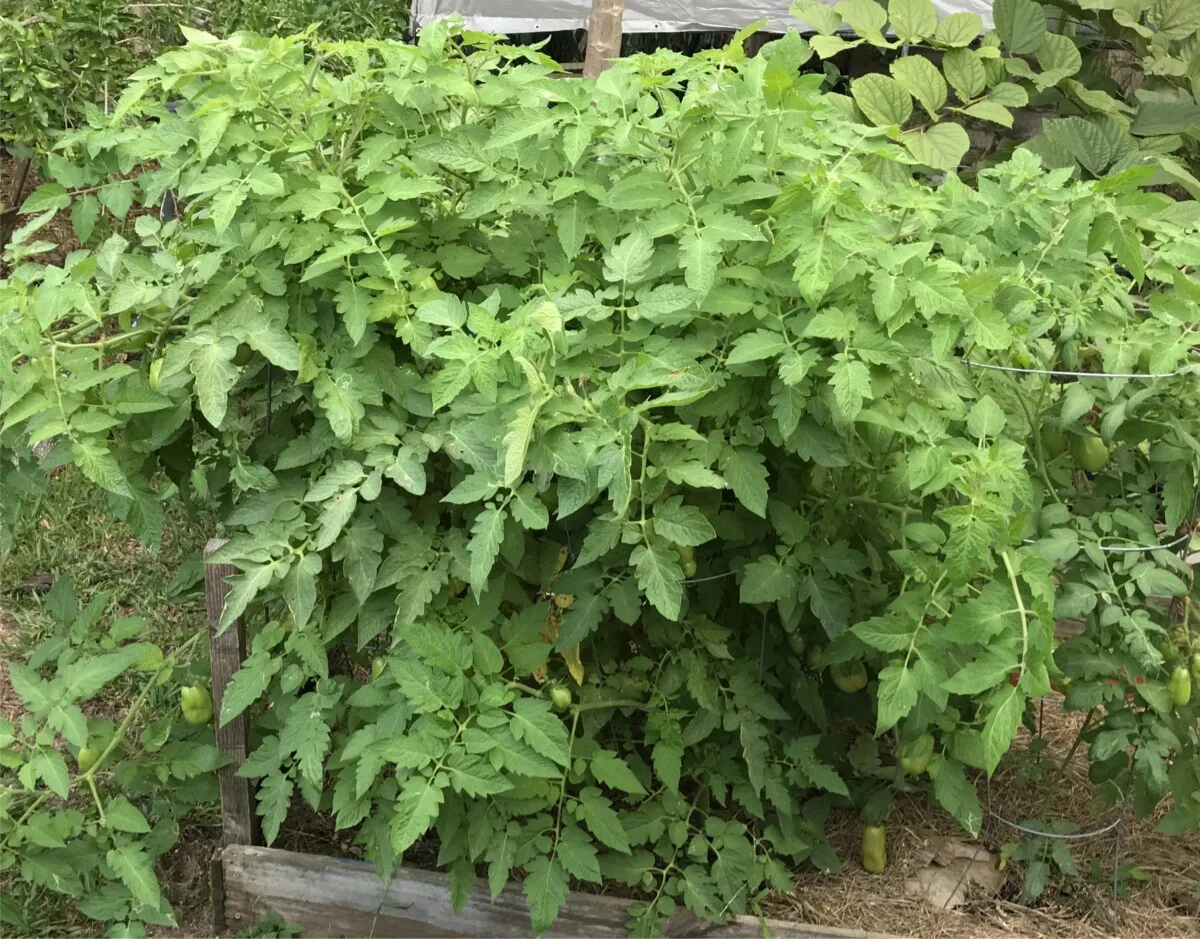
In the subtropical South, we plant many of what are considered summer vegetables in the autumn. The summer heat is too high to allow fruit production, so the milder days of fall provide better conditions for vegetable gardening.
These popular crops include tomatoes, peppers, eggplant, and strawberries. They will all grow through our mild winter weather. However, we often get the occasional night of frost starting in December, and they need protection overnight.
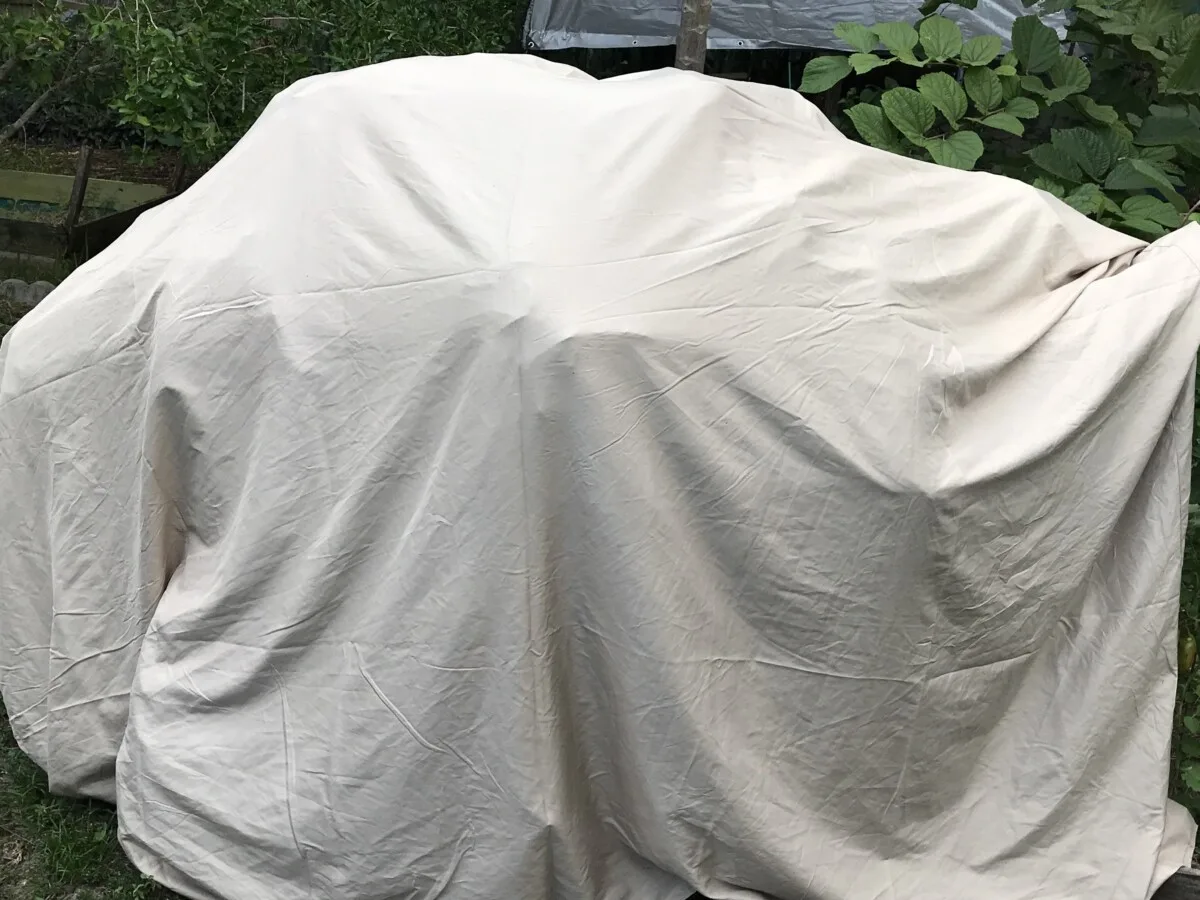
You’ll also see many county extension agencies throughout the American South recommend planting frost-sensitive plants like squash, melons, and cucumbers in January or February. However, even in Zone 10a, we can get an overnight cold snap in mid-March, and these plants can be killed off by even a light frost.
Hardy edible plants that don’t need frost protection
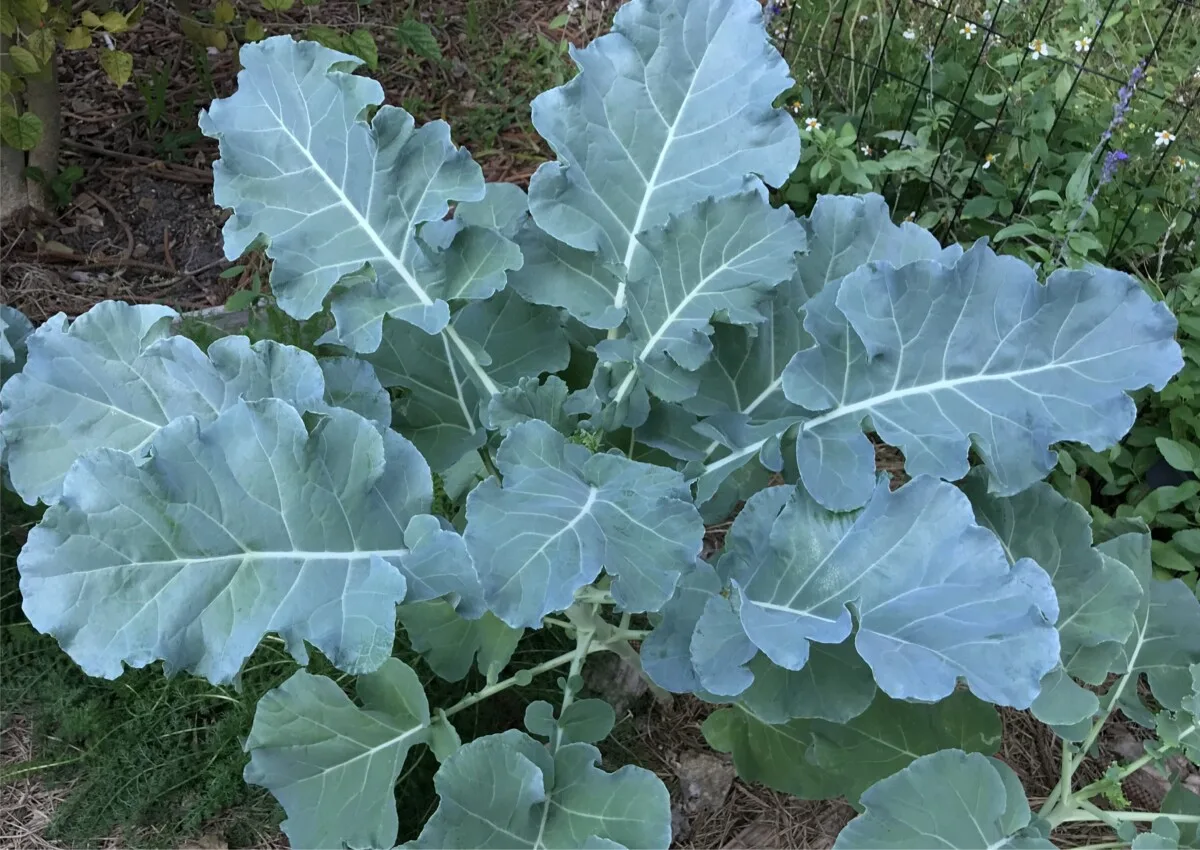
In the midst of preparing for frost, it’s reassuring to know that not all of our winter crops need the same level of vigilance. Many plants we grow during the cooler months have evolved to withstand frosty conditions.
Some are even improved by a cold snap. For instance, leafy greens like kale, spinach, and collards not only endure light frosts but can actually become sweeter as a result.
Root vegetables present another category of hardy edibles. Carrots, beets, and radishes snugly nestled in the soil are naturally insulated against the cold.
Similarly, the brassica family, encompassing broccoli, Brussels sprouts, and cabbage, shows remarkable resilience in the face of cold weather.
Recognizing which plants can hold their own against the cold will not only ease your mind and your workload but also help you plant a garden that remains productive, even as the temperatures dip.
Fruit Trees and Frost
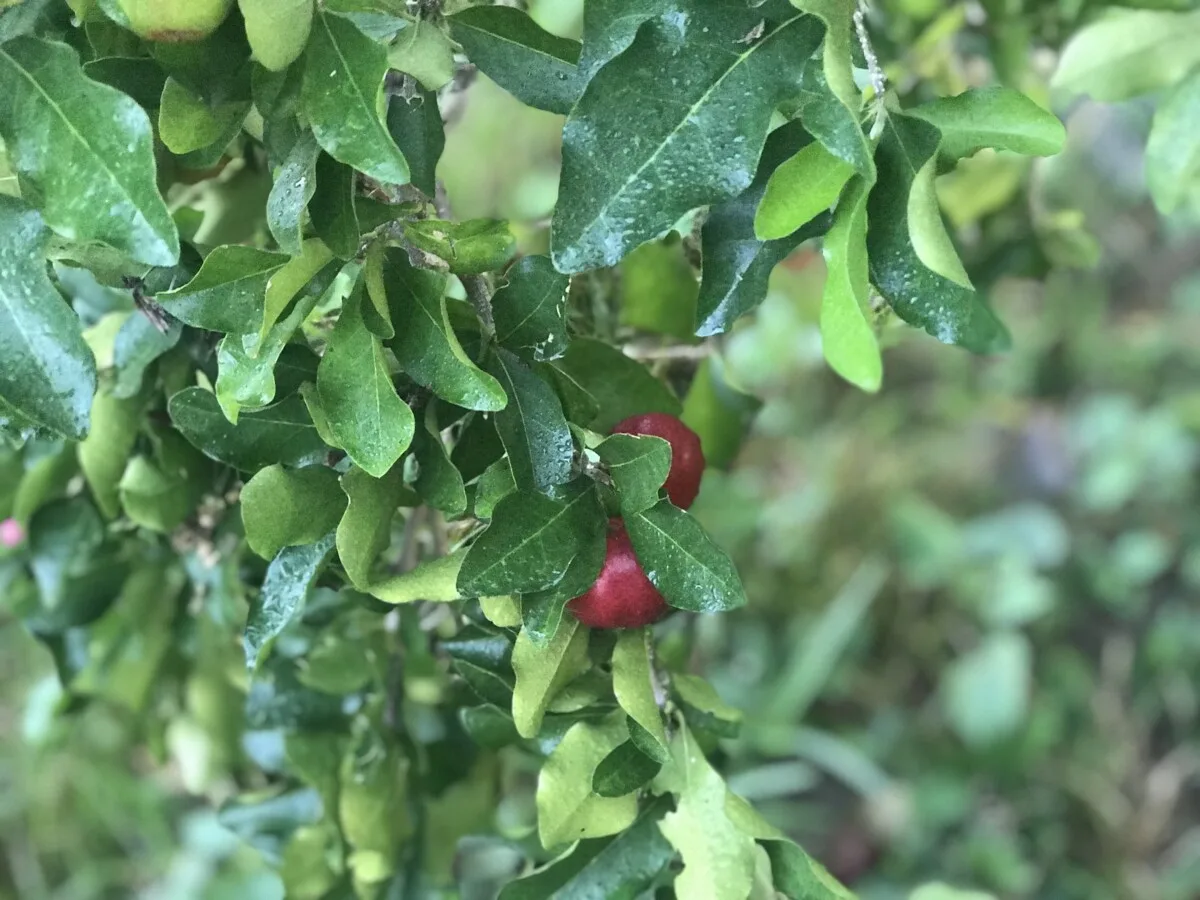
The need for frost protection for fruit trees can vary significantly based on the type and maturity of the tree. Citrus trees, such as oranges, lemons, and limes, are particularly susceptible to frost damage and often require protection in colder temperatures.
I have two Meyer lemon trees, and they grow in a protected microclimate under a tree canopy and in containers that I can easily cover.
Deciduous fruit trees like apples, pears, and peaches have higher frost tolerance, especially when they are dormant in winter. These trees are generally well-adapted to brief cold snaps and usually don’t require additional protection. They also don’t thrive in the hottest zones of the South.
Tropical fruit trees like mangoes and avocados are suited to zones 9 to 11 and need safeguarding against the cold. My papayas survived last year’s super-cold spell, and my Acerola (Barbados cherry) has become resistant to deep cold snaps with age.
It’s also important to note that while mature trees may withstand lower temperatures, young fruit trees are more vulnerable and benefit from frost protection measures.
Step-by-Step Winter Plant Protection
Covering is the standard way to protect plants from frost. However, I’ve navigated many cold snaps and found that following a few fundamental steps before covering provides a significant difference in how well my plants fare during an overnight cold snap.
I normally find that the best time to prepare plants before covering is during the highest heat of the day — usually between 2 pm and 4 pm. This allows enough time for any wet foliage to dry and lets me make the most of the remaining sunlight for covering.
My pre-frost garden routine is to:
- Water
- Mulch
- Move
- Heat
- Cover
I perform the first three steps when it’s still warm and sunny, so I can cover well before sunset.
Watering Before a Frost
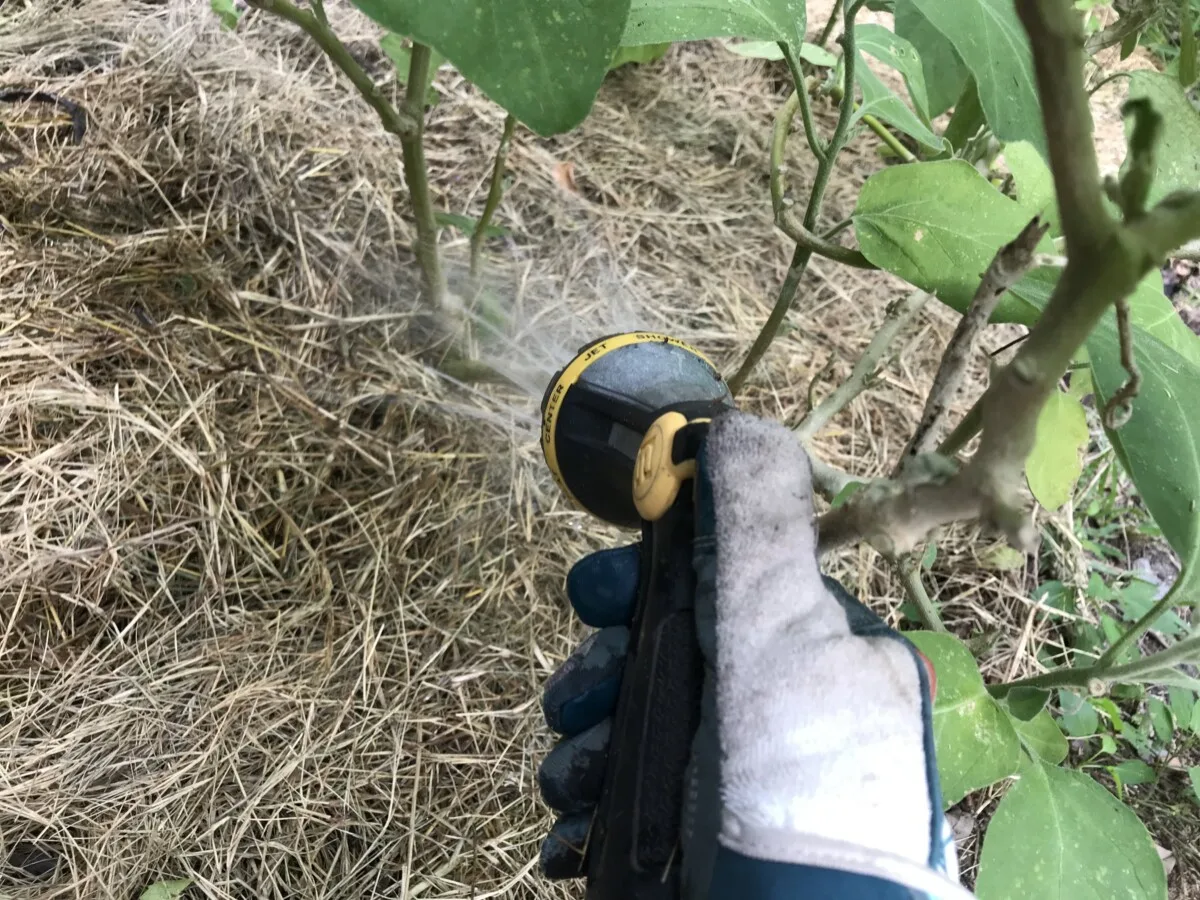
The first step for preparing any of your plants for an overnight frost is watering deeply. It might seem counterintuitive, but it’s actually quite beneficial.
Moist soil absorbs and retains heat from the sun better than dry soil. This acts as a natural heat reservoir that can keep the roots warmer as the temperature drops.
So, give your plants a good watering during the day before a frost is expected. Water early enough to allow the damp soil to absorb sunlight.
When not to water
There are two occasions when you shouldn’t water your garden before an overnight freeze. The first is when it has already rained.
Very often, a cold front follows a band of rainy weather. In this case, nature does all the work and provides that necessary moisture that helps plants survive the cold front.
The second occasion is when it will be very cold for several days and nights. This doesn’t happen very frequently in zones 8 through 11. More often than not, a frosty night usually turns into a warm sunny day.
But cold, soggy soil can damage plant roots when temperatures drop for days at a time, so keep your eyes on your local forecast when planning your garden frost protection.
Deep Mulching In-Ground Plants
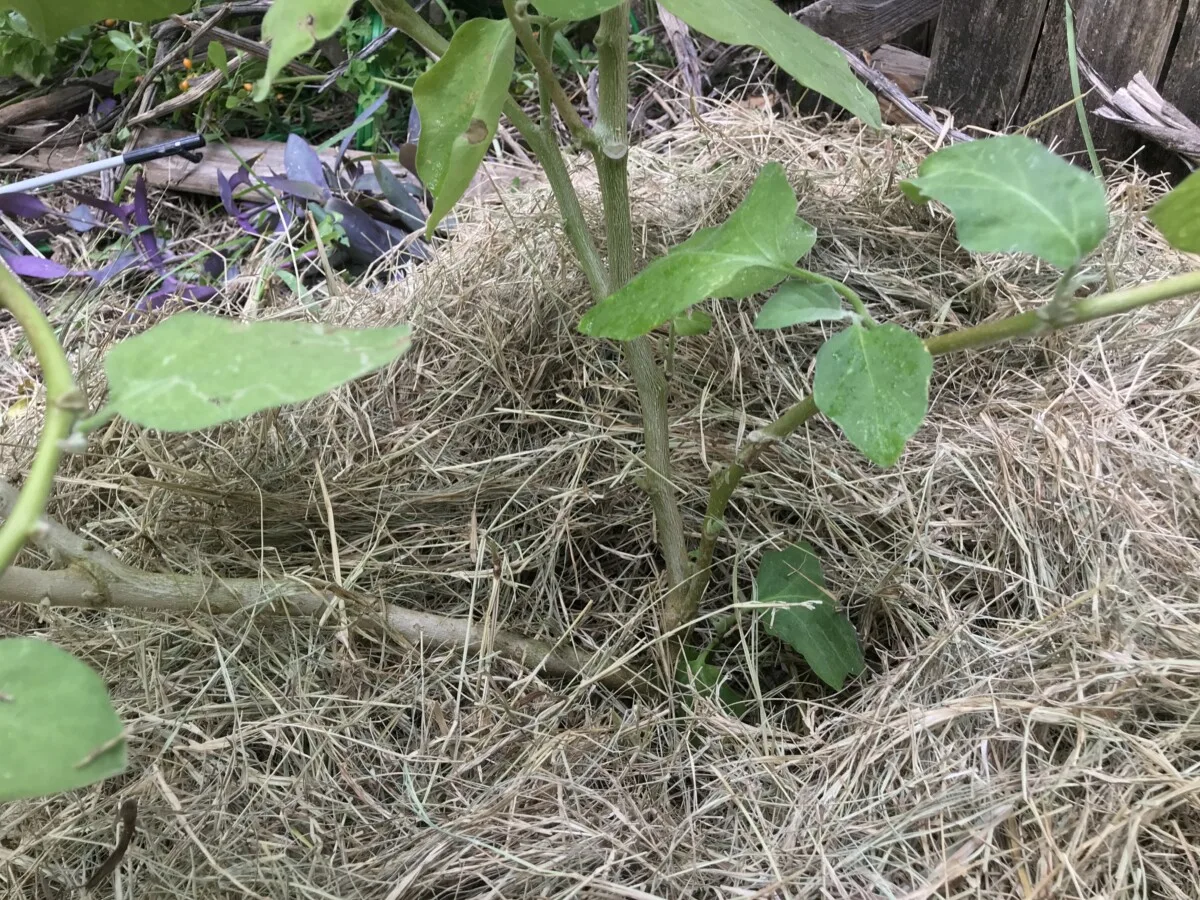
Another effective frost protection method is deep mulching. Applying a thick layer of mulch around the base of your plants acts as an insulator for the roots.
This is particularly helpful for perennials and young plants, as it keeps the soil temperature more consistent, protecting the root system from sudden temperature fluctuations.
I like to use coastal hay because it’s light and fluffy. This means lots of extra air pockets, which means lots of extra insulation. Wood chips also work and may be a better solution if you have an HOA or areas you want to look well-manicured.
You may have heard to avoid placing mulch too close to tree trunk or plant stems because it may cause wood rot. In my opinion, the precious time available to protect plants prior to a sudden freeze isn’t the time to worry about this. I normally just pile it on, knowing that I can tidy it up the next day when the covers come off and it warms up.
Moving Cold Sensitive Plants
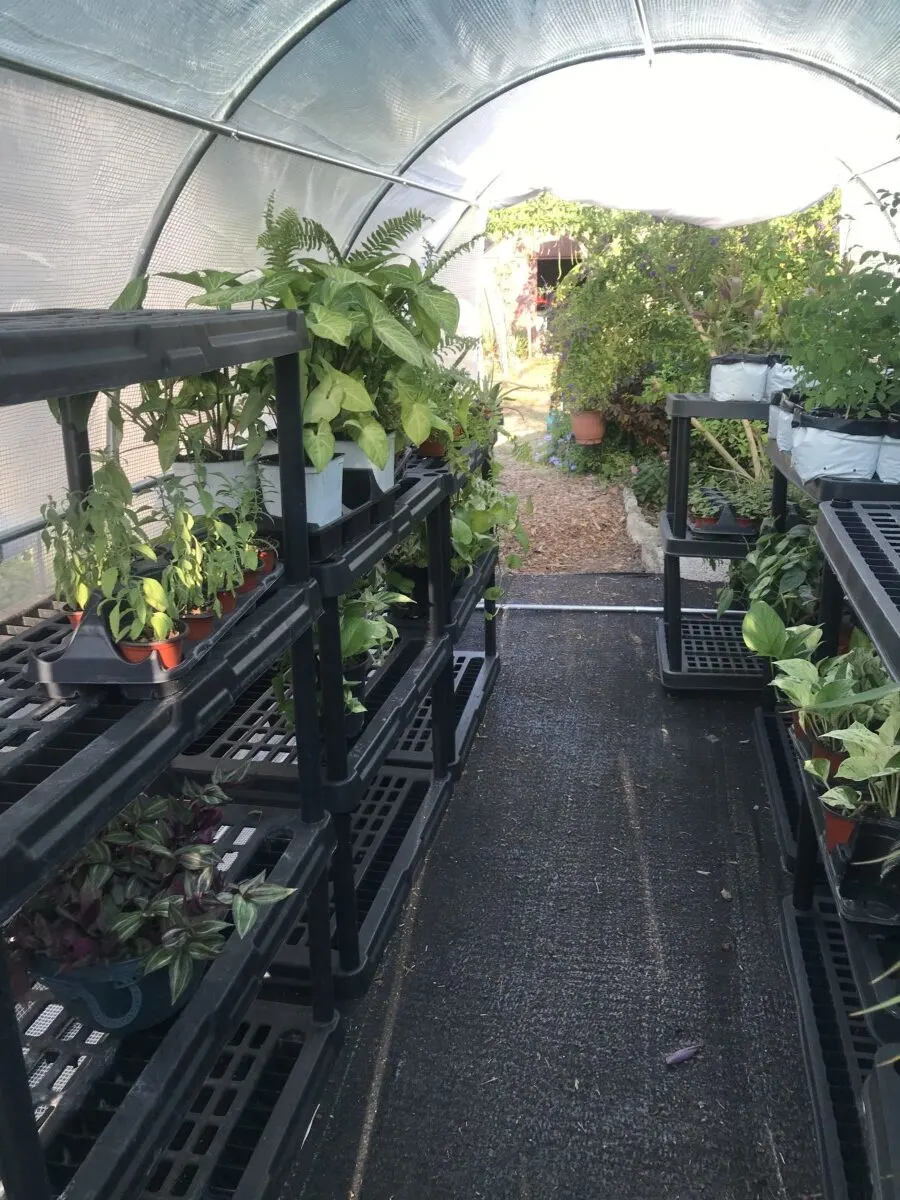
One of the simplest and most effective ways to protect your plants is to bring potted plants indoors. This is especially crucial for tropical plants or any plant that’s particularly sensitive to cold.
I start spring vegetable seedlings in December and January, so I make sure I have enough room and grow lights indoors for them.
If you’re limited on space, you may want to invest in an inexpensive greenhouse.
You can also place them in a garage or shed. However, keep in mind that while these can provide some protection, they can still get quite cold.
How do you keep plants warm in an unheated garage?
In an unheated garage, you can keep plants warm by insulating them with bubble wrap or burlap, especially around the pots.
Also, placing them together can help conserve heat, as plants emit a small amount of warmth. Ensure they still receive enough light during the day and are protected from drafts.
Protecting container plants from frost outdoors
The Food and Agriculture Organization of the United Nations recommends growing under tree canopy in its publication on frost protection. Many old-school Florida gardeners grow their shade-loving tropical plants, like vanilla orchids, underneath oaks, where they are also protected from frost.
Likewise, you can place container plants grouped together underneath trees during an overnight cold snap, as the canopy creates a warmer microclimate.
Provide Heat if Possible
There are a few easy ways to provide your most sensitive plants with some extra heat.
Use passive solar heat
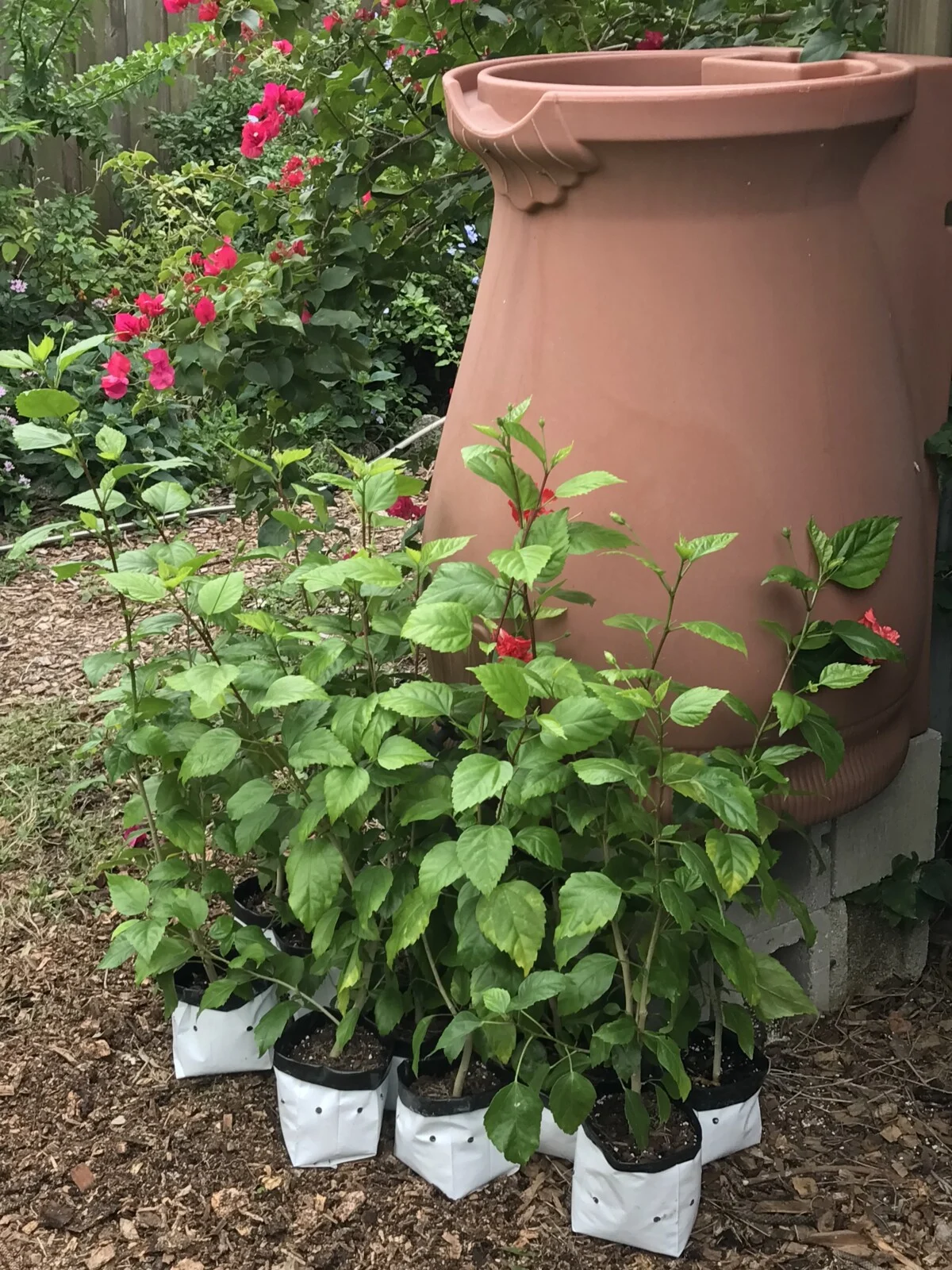
If you can’t move your container plants indoors, you can still move them to warmer areas of the landscape.
Exterior building walls absorb heat during the day, especially those with southern exposure, and radiate it as they cool in the evening. Grouping container plants in front of these walls will help create a pocket of warmer temperatures.
You can also create a solar heat collector with a large barrel, drum, or garbage can filled with water. You will need to have them prepared several days in advance.
This involves using large (55-gallon) barrels filled with water to collect heat during the day. At night, they radiate heat after the sun goes down. Many large growers use these barrels to keep their greenhouses warm at night. However, I’ve discovered that you can also use them outdoors in a warm, southern climate.
I realized this from collecting and storing rainwater. I have rain barrels as well as large plastic garbage cans. We use them for storing non-potable water during hurricane preparation, and since hurricane season ends in November, the big bins were already in place to work as solar heat collectors.
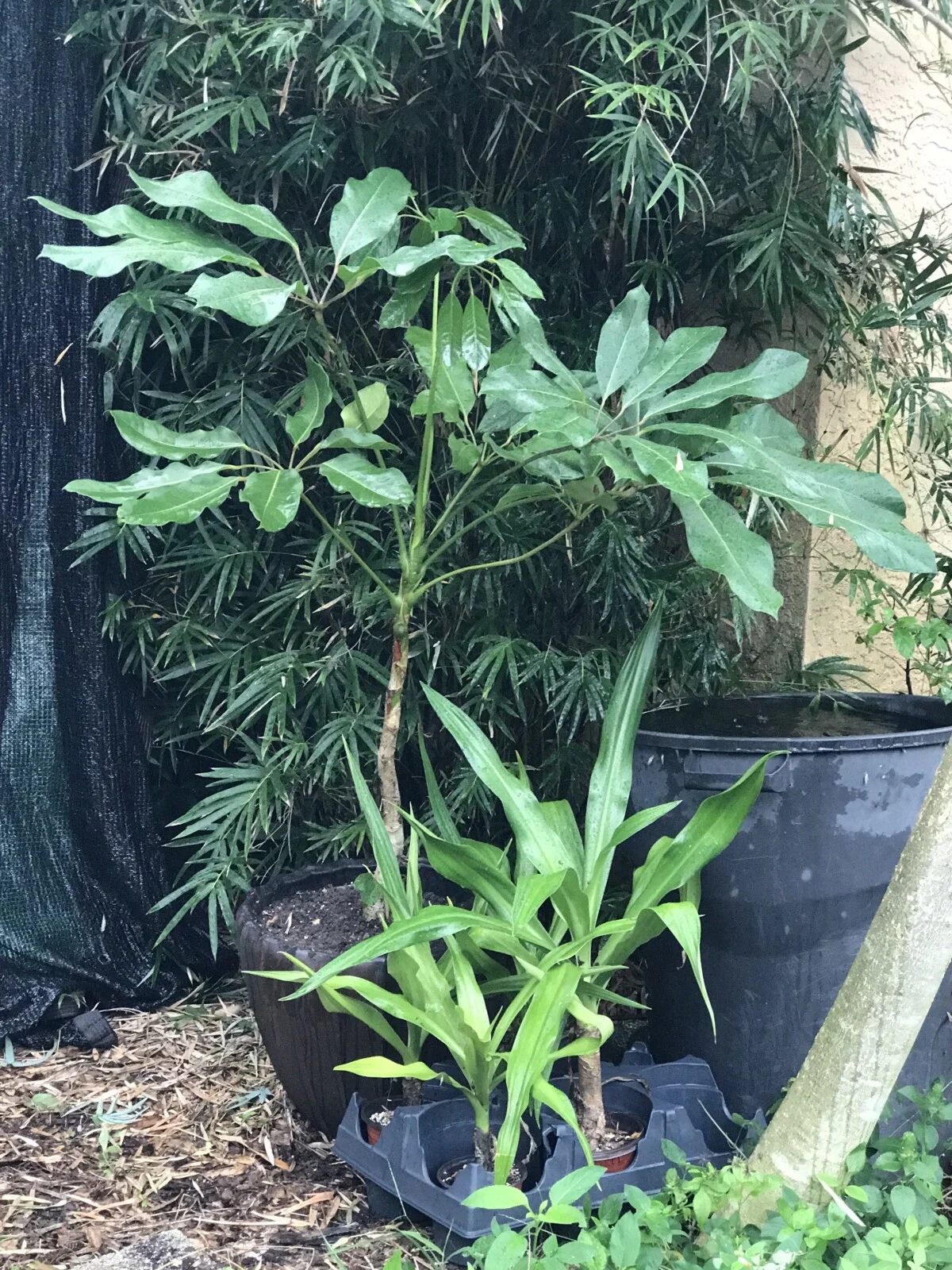
Group delicate container plants around a filled water barrel or trash bin for extra warmth at night, when a degree or two can make a big difference. For best results, cover them all under one blanket or frost cloth.
Use incandescent light strings
When you’re out shopping for the upcoming winter holidays, don’t overlook those old-fashioned strings of decorative lights. LEDs may be the coolest, brightest, and most energy-efficient, but they don’t radiate heat. Incandescent string lights do.
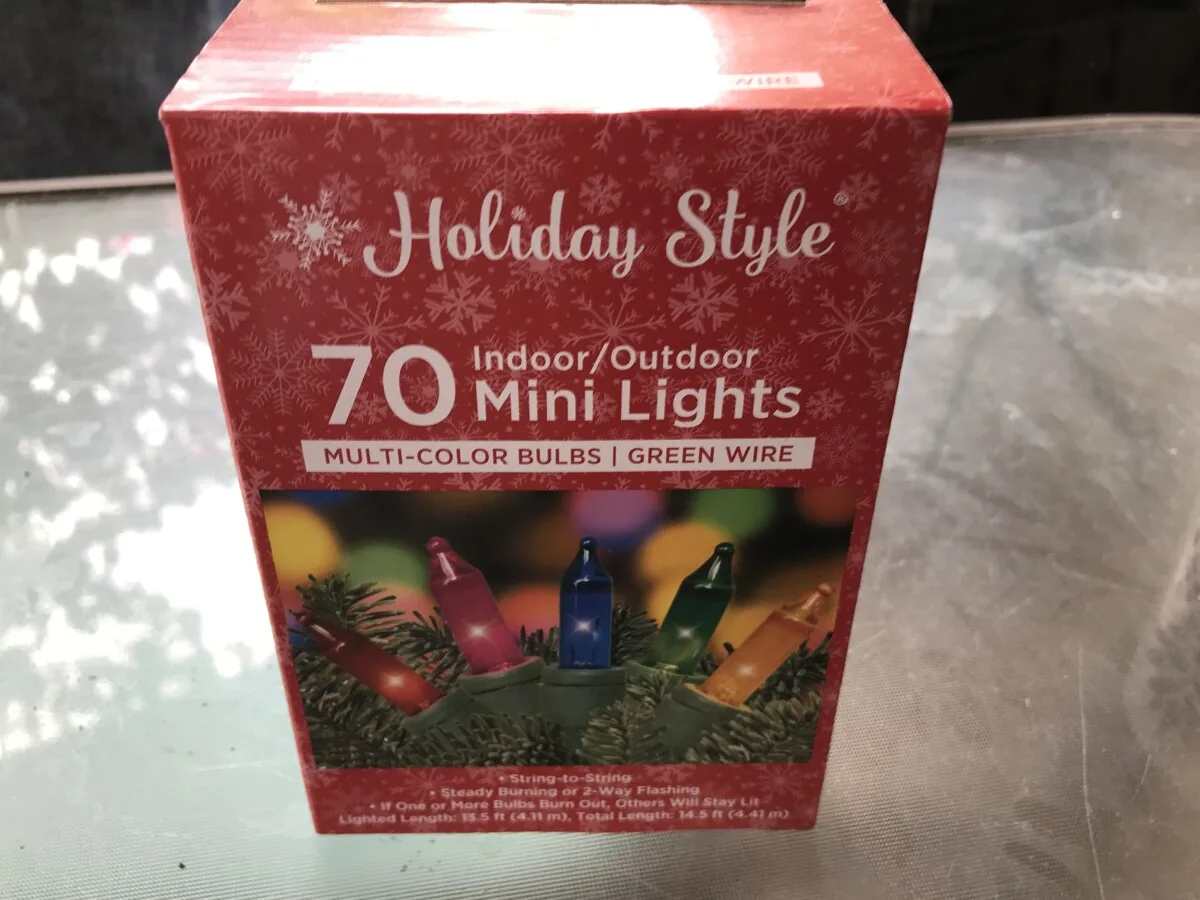
So, you can kill two birds with one string of lights by decking your landscaping for both cheer and to protect plants from frost.
Drape your delicate plants in incandescent holiday lights and then cover them with a sheet, blanket, or frost cloth. According to Master Gardener’s blog on the University of California Agriculture and Natural Resources website, this technique can provide another 4 to 8 degrees of extra protection from the cold.
Most importantly, make sure you get lights and extension cords rated for use outdoors to avoid setting fire to your Tibouchina.
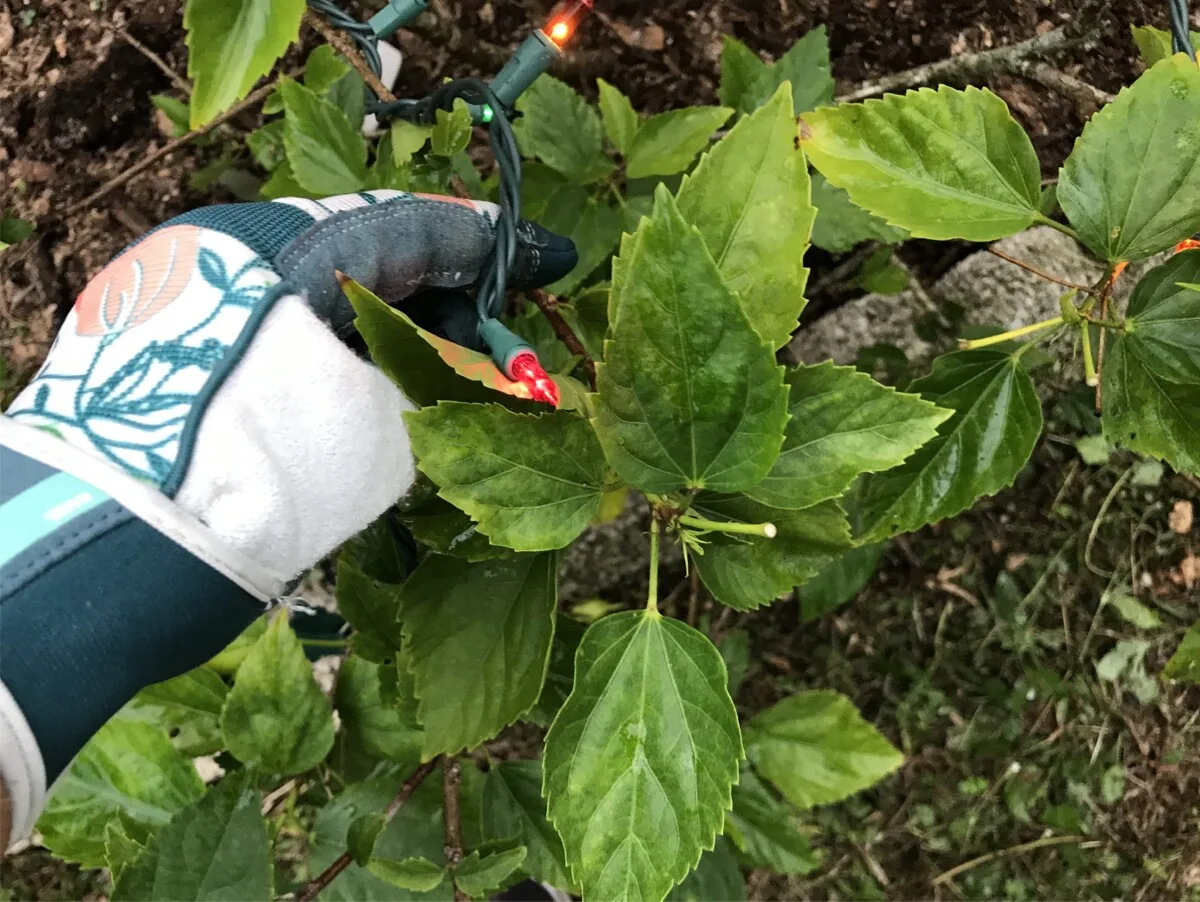
Cover to Protect Plants from Frost
Once you have watered and mulched your most cold-sensitive plants, it’s time to cover them before it gets dark.
Cover before sunset
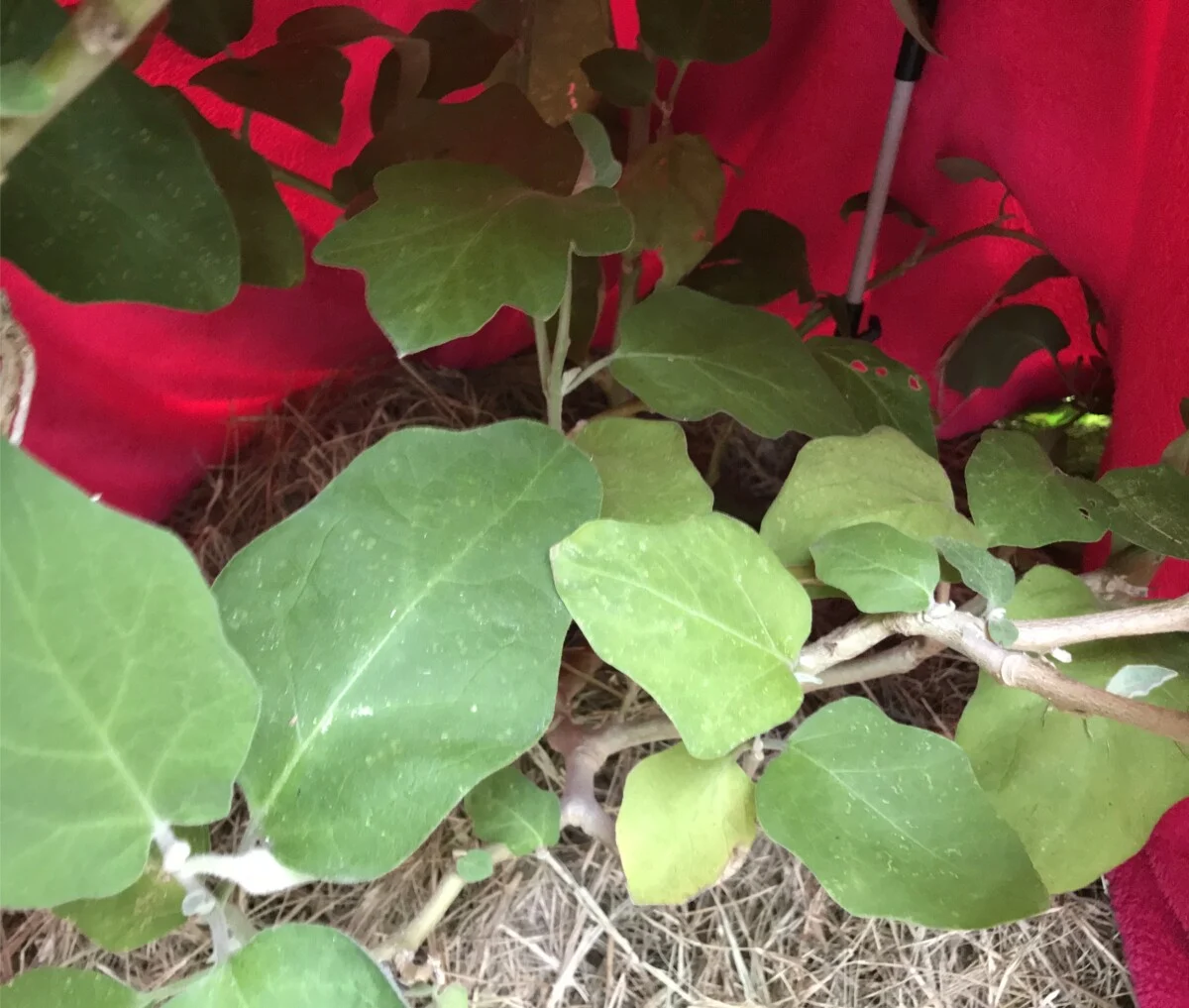
You want to time covering before sunset, which allows you to trap some of the residual heat under the covers.
Frost cloths, blankets, or even old sheets can be lifesavers when a frost is predicted. Covers work by trapping heat from the soil and keeping the plant insulated.
Choosing the right covering material

Cloth covers, such as blankets, sheets, or specially designed frost cloths, work the best. They provide the necessary insulation while allowing moisture and air to reach the plant.
Over the years, I’ve saved old sheets, blankets, and beach towels, and have purchased more from secondhand stores and yard sales.
Burlap is another excellent option, especially for larger plants and trees, due to its sturdiness and insulating properties.
Cover your plants securely
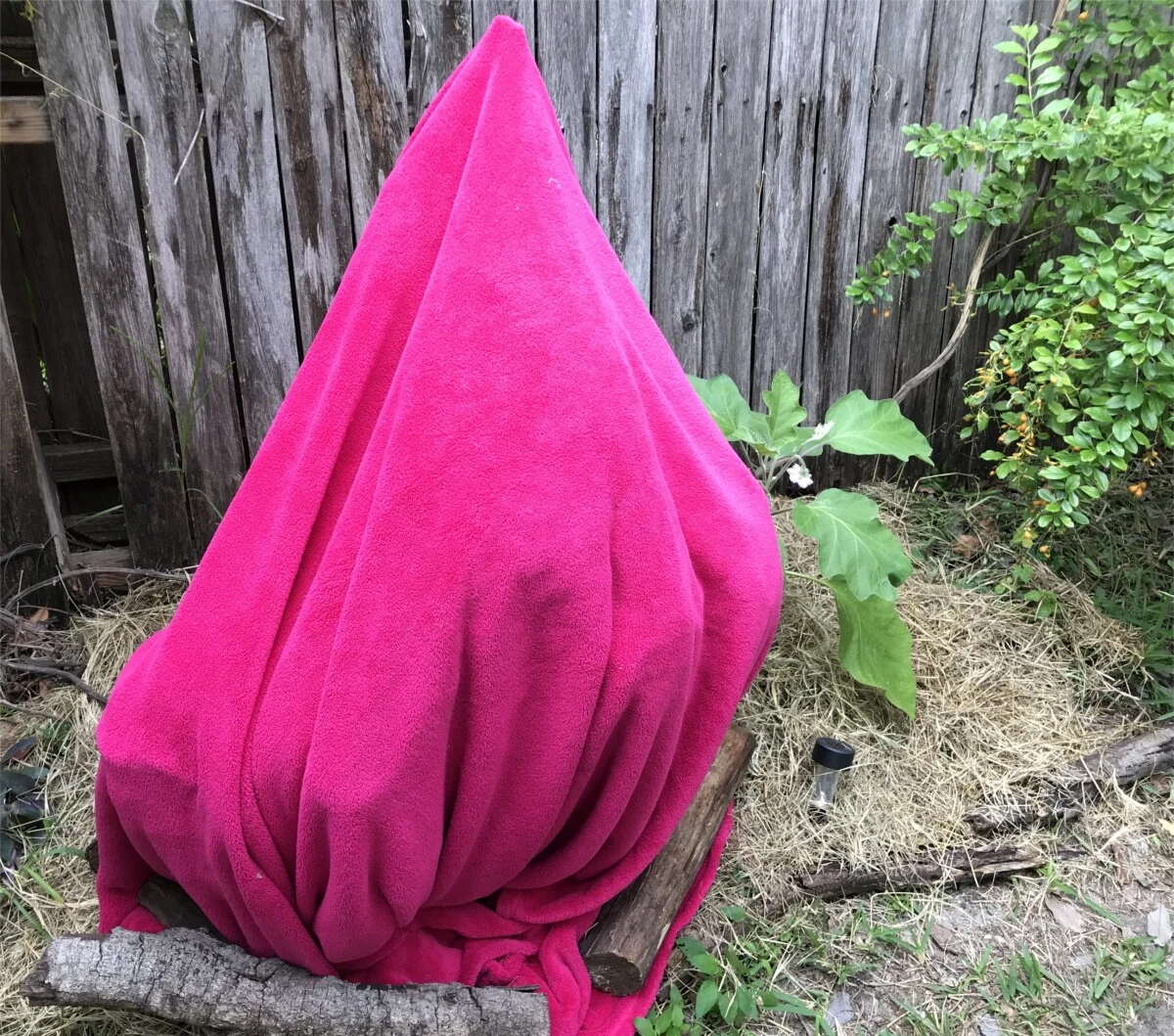
It’s important to cover the plant completely from top to bottom, extending the cloth to the ground, to trap in as much heat as possible.
If you’re worried about crushing your plants, use stakes or bamboo poles to hold the covers up off of your plants. I find that electric fence posts are extremely well-suited for this purpose.
They’re easy to install and remove thanks to a sharpened end and a little “tab” that helps you push it into the ground with your foot.
When a cold snap includes a windy night, ensure the wind stays out of the warm little nest you’ve created for your plants. Weigh down the edges of the covers with bricks, stones, or logs.
If you’re not worried about damaging the cloth, you can also use landscape pins to secure them. I’ve even used a staple gun to secure old sheets to the edges of a wooden raised bed.
The role of plastic in frost protection
Plastic transfers cold more easily than fabric, so avoid using it to cover your plants. While many greenhouses use plastic covers, the air gap between plants and walls is sufficient to insulate the plants from damage.
While plastic covers, including plastic bags and garbage bags, can be used in a pinch, they often do more harm than good.
Plastic tends to trap moisture, which can lead to condensation and increase the risk of freezing, potentially causing damage.
If plastic is your only available option, ensure it’s not in direct contact with the plant. The cold will transfer quickly, damaging any portion of the plant that’s touching the plastic. Remove it promptly as temperatures rise to prevent overheating.
Using cloches for smaller plants
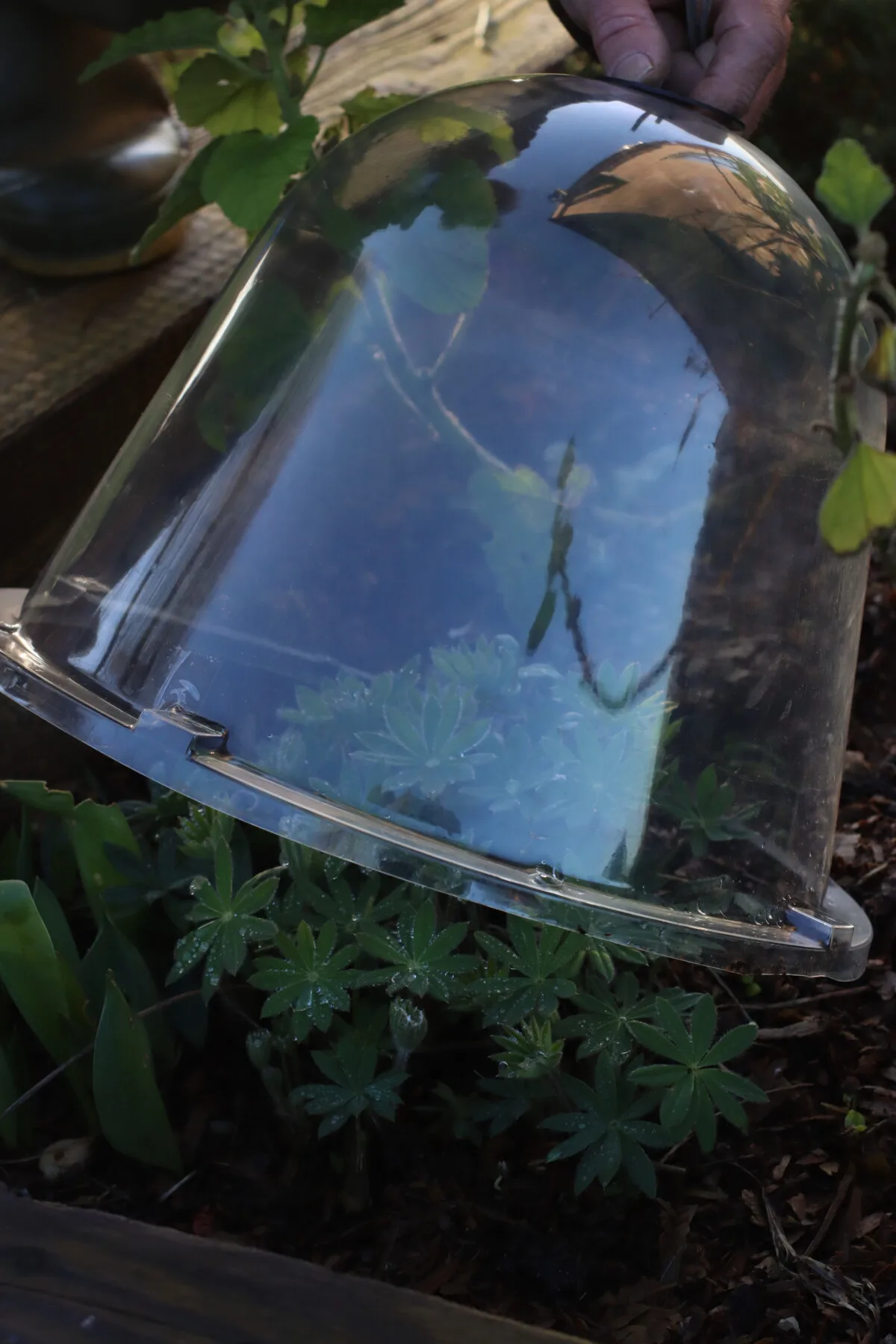
Cloches are an elegant and effective way to protect individual tender plants in the ground. While you can find a number of really attractive ones, you can also DIY using things around the homestead.
For extended use, look for empty milk jugs, pickle jars, or 2-liter bottles that will allow in light.
If your cold snap is only going to last overnight, your options open up to things like coffee cans and cardboard boxes.
When it comes down to it, though, nearly any type of cover (except maybe plastic) is better than no cover at all.
What to Do After the Freeze
Aftercare is just as important as preparation is when you need to protect plants from frost. The best practice is to remove the coverings in the morning as temperatures begin to rise and the frost has melted.
Assessing the Damage
The steps taken (or in some cases, not taken) in the aftermath of a cold snap are just as crucial as the preparations made beforehand.
- Remove covers
- Look for and note damage
- Rake mulch away from trunks and stems
- Water plants well once it warms up
- Refrain from trimming damaged foliage
During my winter months, the coldest time of the night happens around 7 am, just before the sun rises. So, I wait an hour or so to warm up and get myself adequately caffeinated before facing the cold and uncovering my plants.
Removing the covers prevents overheating, which could occur if the plants remain covered under the increasing warmth of the sun.
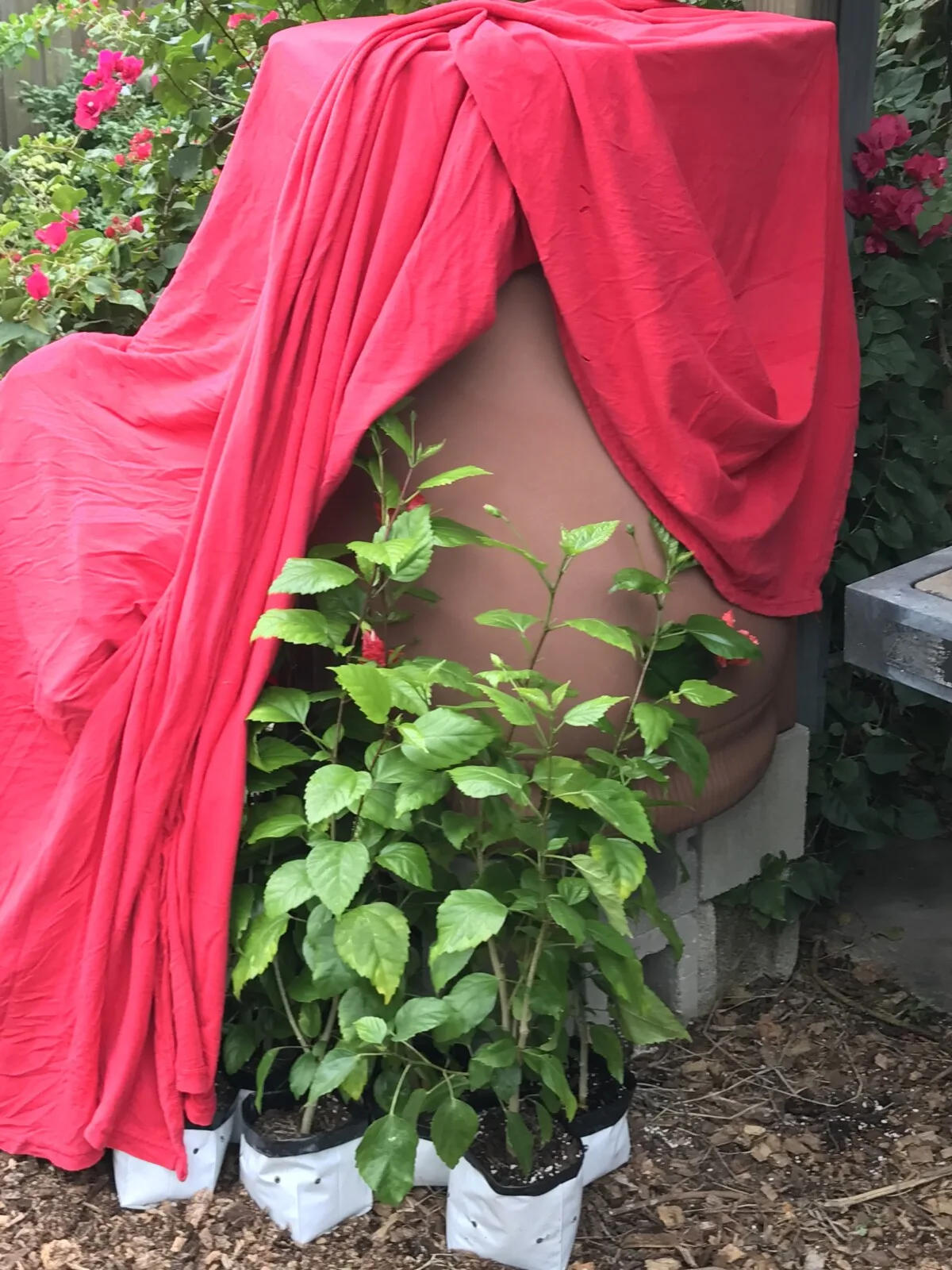
If you find frost damage on your plants, indicated by wilted or blackened foliage, there are several steps you can take to aid their recovery.
First, avoid the immediate urge to prune the damaged parts. This foliage, although damaged, can provide some insulation against further frost damage. It’s better to wait until the risk of frost has passed before doing any pruning.
In the meantime, gently watering the plants can help thaw the soil and provide the moisture they need to recover.
If you didn’t get a chance to before the frost, apply a layer of mulch around the base of the plants to help maintain soil temperature.
For potted plants that have suffered from frost, moving them to a sunnier location can facilitate their recovery.
Post-frost care involves careful monitoring of your plants. Some may recover quickly, while others might take longer to show signs of revival.
Do plants survive freezing?
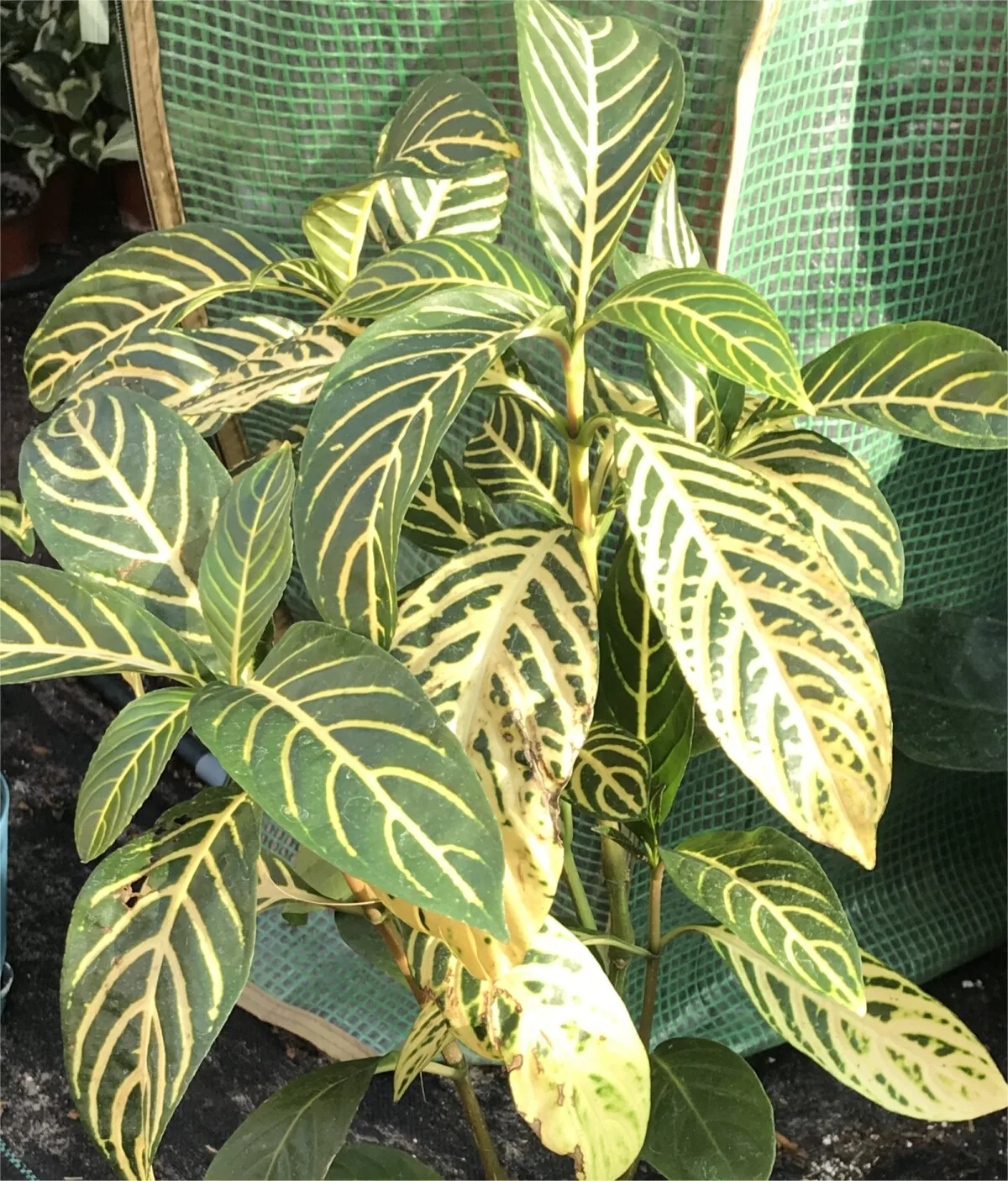
Many hardier plants can survive freezing, especially those that are native to colder climates. However, tropical and subtropical plants are often more susceptible to freeze damage. The survival of a plant after a freeze depends on the plant species, the duration of the freeze, and how low the temperatures drop.
What if it’s a surprise overnight frost?
If you’re caught off guard by a surprise overnight frost, assess your plants as soon as possible in the morning. If they appear frost-damaged, provide water to help them recover, and consider adding mulch for insulation.
Going forward, keep an eye on the weather forecast during susceptible periods. There may simply be nothing else you can do.
Can plants recover from frost?
Yes, many plants can recover from frost, especially if the damage is not too severe. The amount of damage really depends on how long the temperature remained below freezing.
A short period of sub-freezing temperature may damage some outer leaves only, while several hours of this kind of cold can affect stems and even roots.
In most cases, frost damage presents as blackened leaves. In other cases, you won’t see damage for several days. During a frost, the water inside the plants’ cells freezes, which damages the cell walls. Sometimes this damage doesn’t become apparent right away.
How do you know if a freeze killed a plant?
Many plants shed their leaves in the wintertime, and this is true even in subtropical climates. Some sensitive plants (like tropical hibiscus) may drop all their leaves in response to an overnight frost, and eventually leaf out again when the weather warms.
To determine if a freeze killed a plant, check for signs of life once the temperatures rise. Look for new growth at the base of the plant or on the stems. If the stems are brittle and snap easily, or if there’s no sign of new growth by late spring, the plant may be dead.
Should I cut off frost-damaged leaves?
It’s best to wait until the threat of frost has passed and temperatures have stabilized before pruning frost-damaged leaves. Damaged foliage can actually help insulate the plant from further cold injury during the next temperature dive. Once the weather warms up, you can prune off the dead material to allow for new growth.
Balancing Effort with Reward
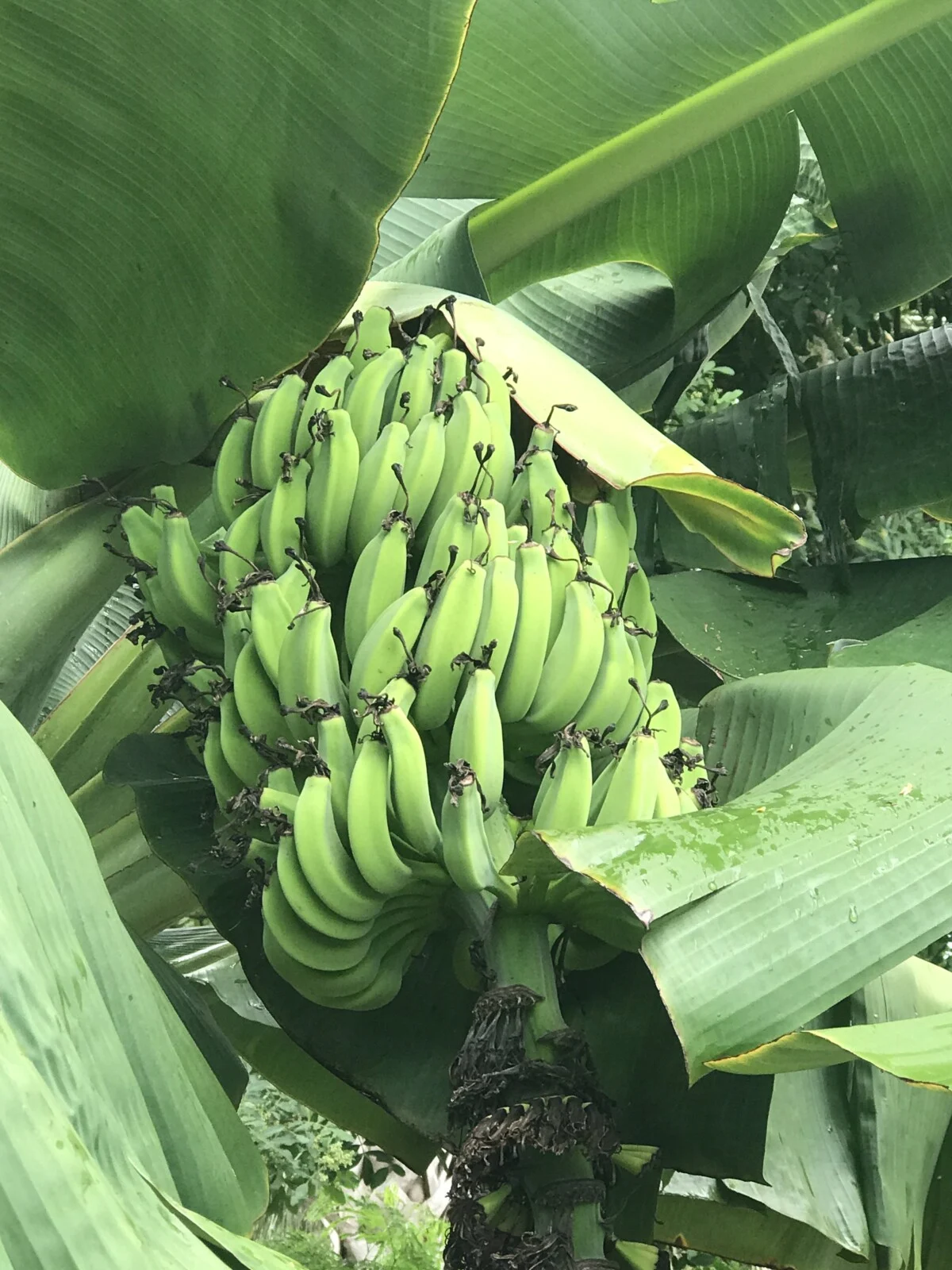
It’s entirely feasible to cultivate a thriving year-round garden in a subtropical climate. Navigating the challenges of frost in Zones 8 to 11 simply involves preparation, timely action, and post-event care.
It’s also important to know when it’s not worth the effort. If your fall vegetables have passed their peak production, don’t waste precious time or resources to keep them going.
Bananas are a beautiful element in any garden, but they’re often just too big to cover. It’s a consolation to know that bananas damaged by a freeze frequently pup new plants from the rhizomes in the spring.
Sometimes, part of successful gardening is picking your battles wisely.
In the meantime, remember that the resilience of your garden is not just in its ability to withstand the cold but also in your ability to adapt to new circumstances with informed and attentive care.

Get the famous Rural Sprout newsletter delivered to your inbox.
Including Sunday musings from our editor, Tracey, as well as “What’s Up Wednesday” our roundup of what’s in season and new article updates and alerts.

